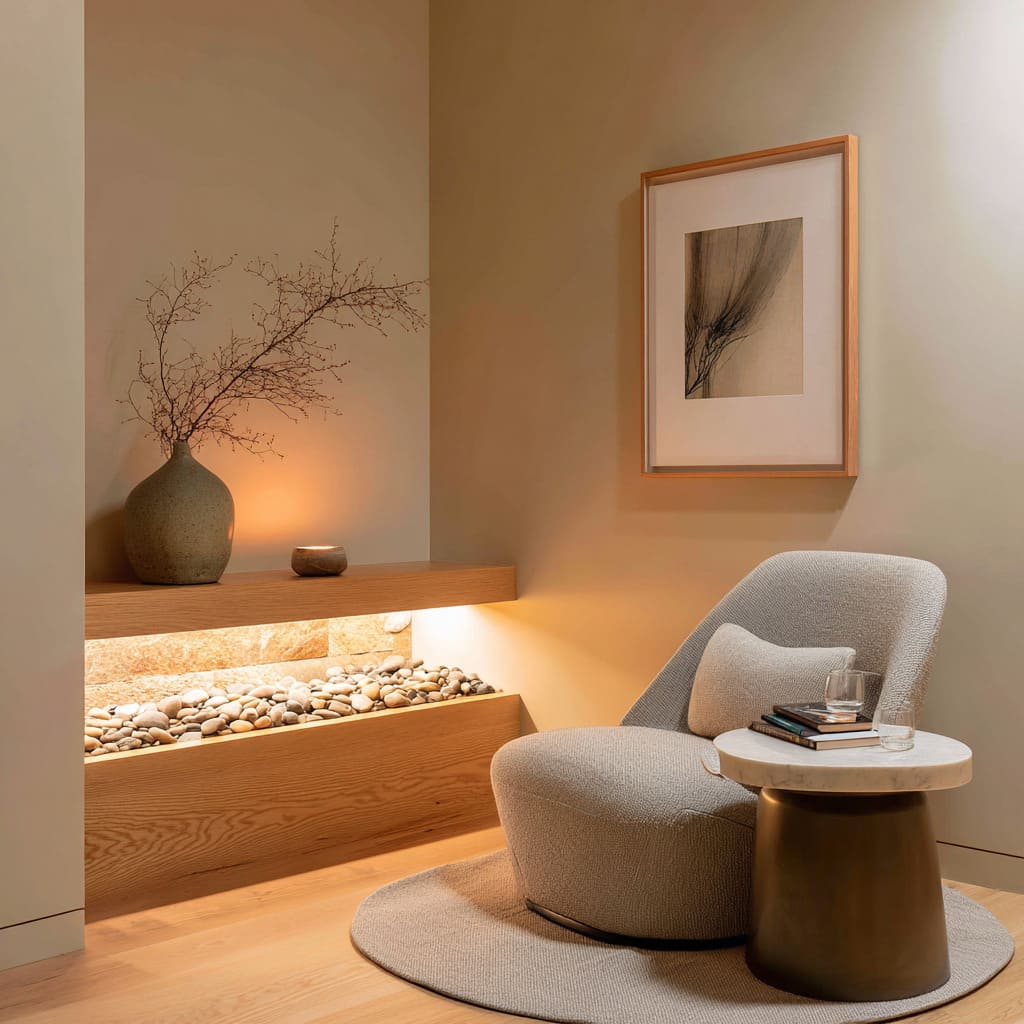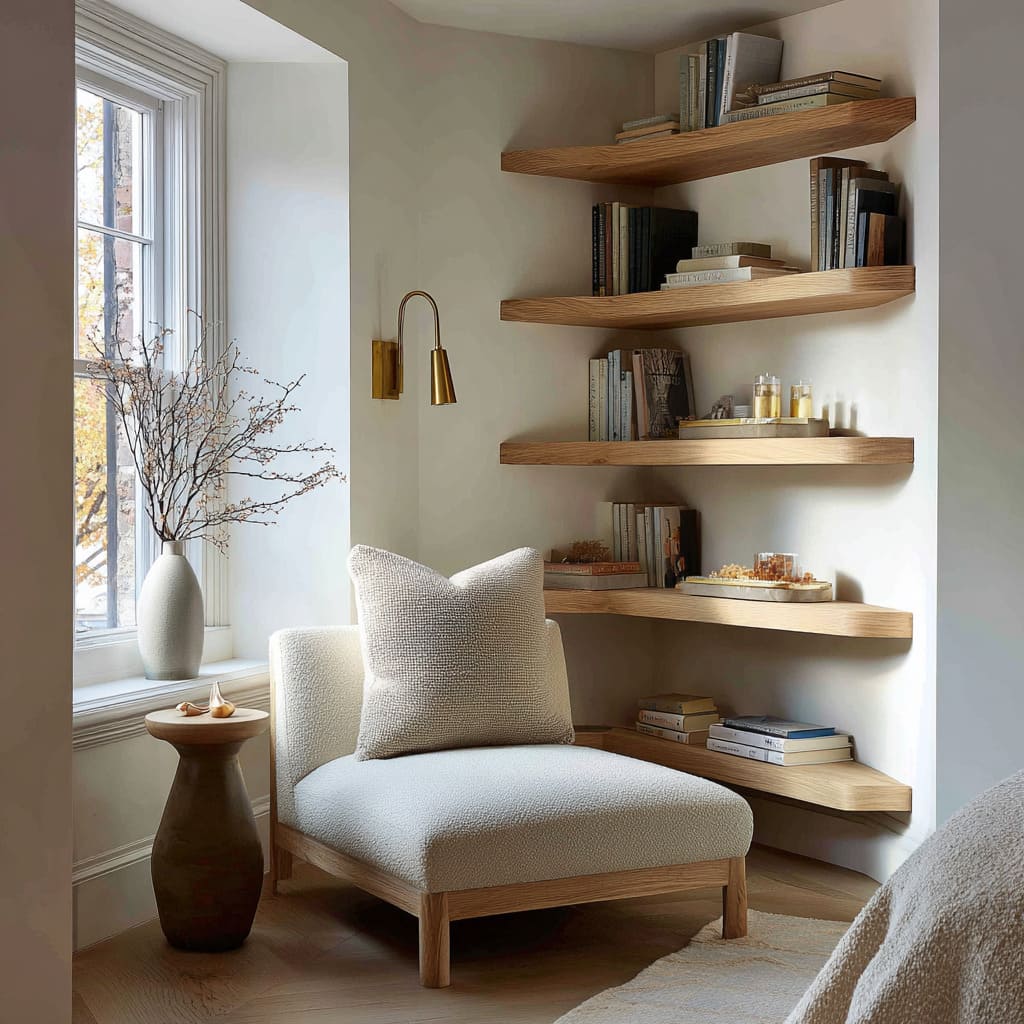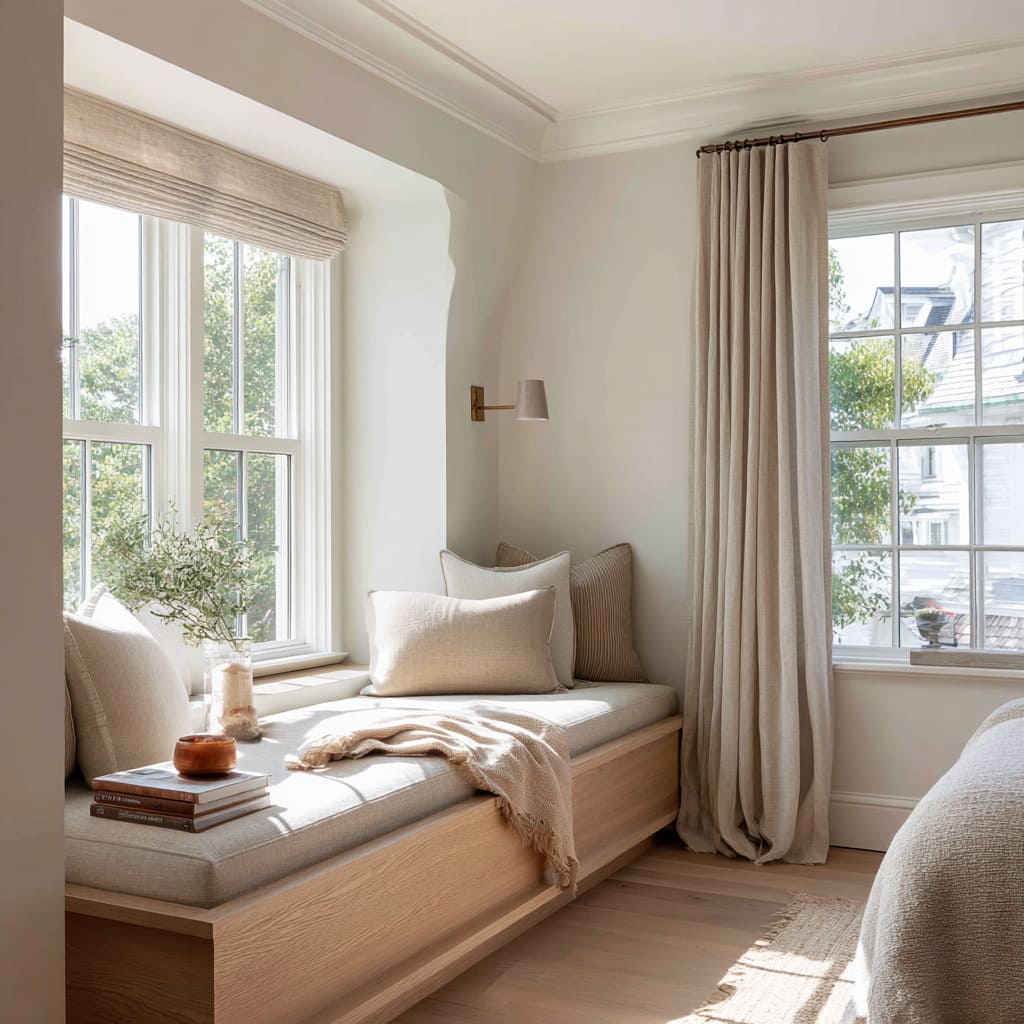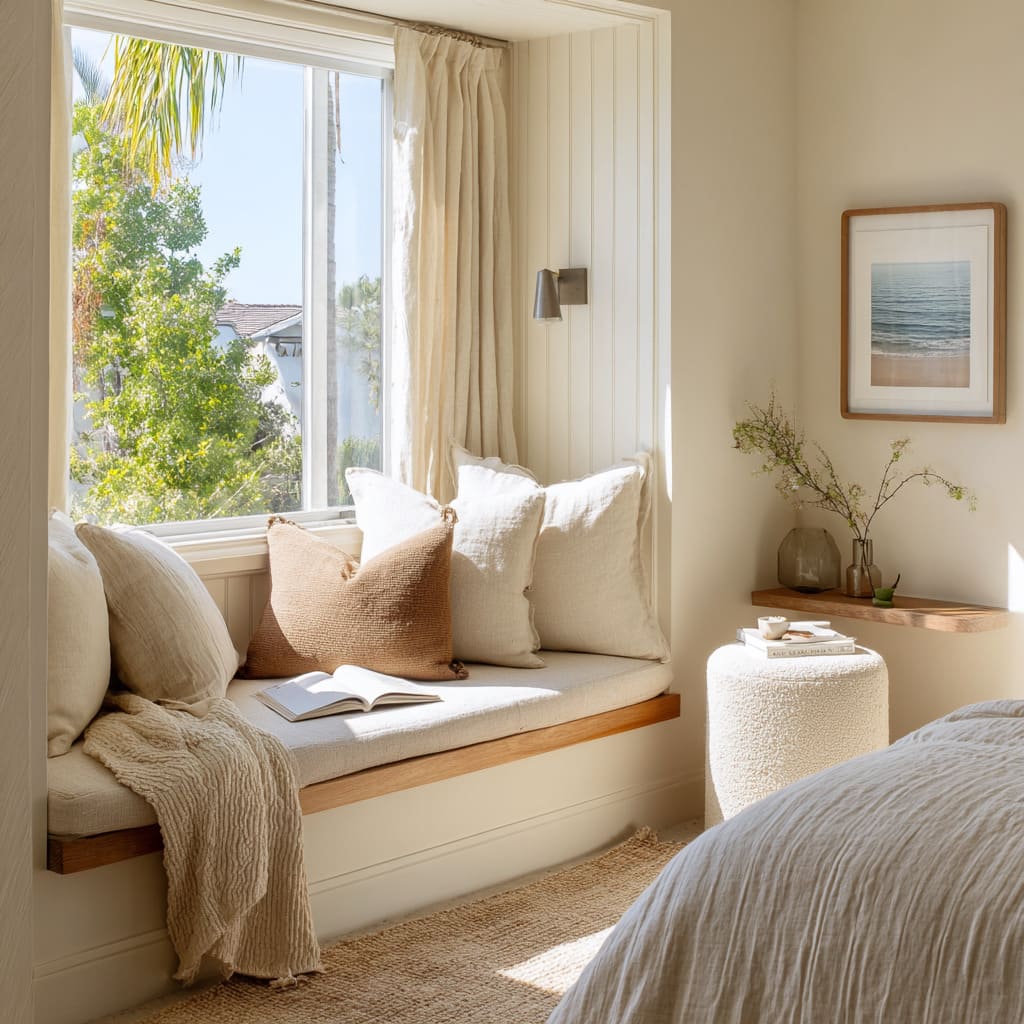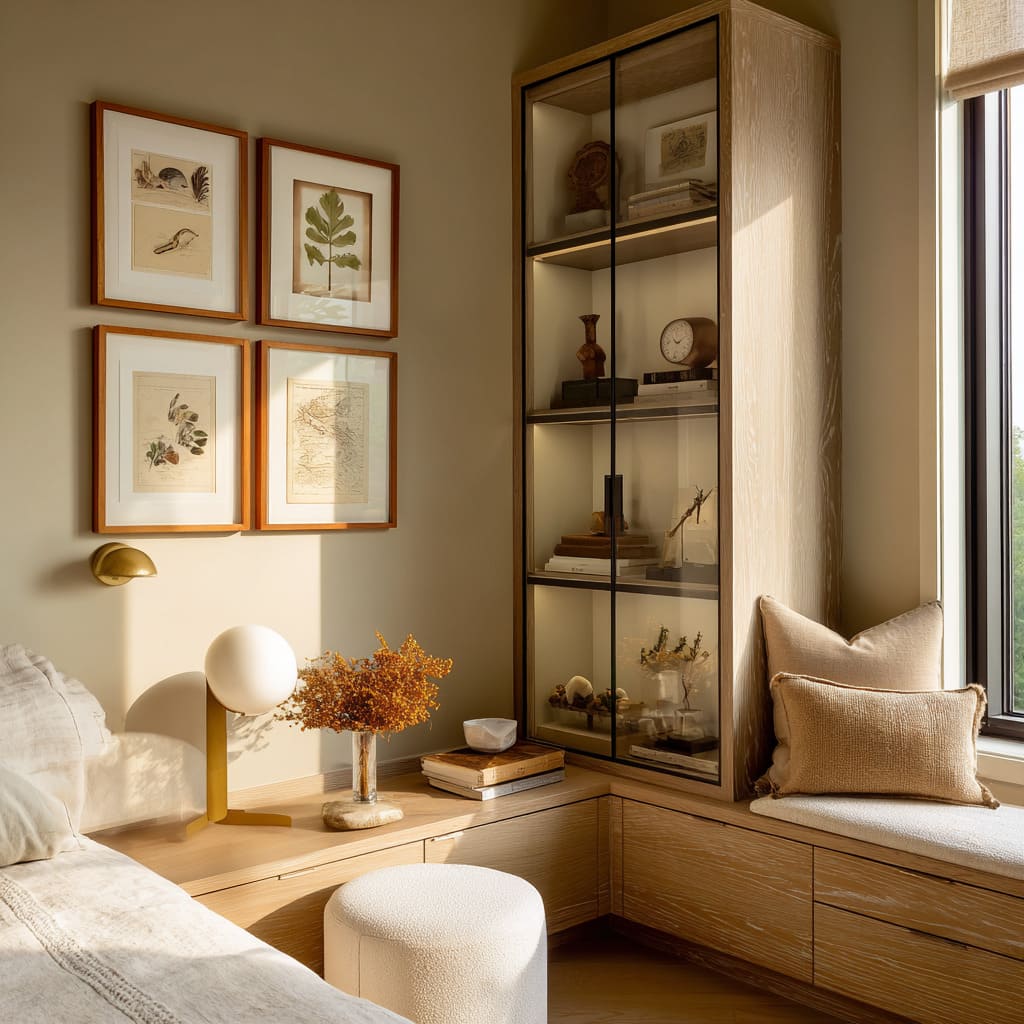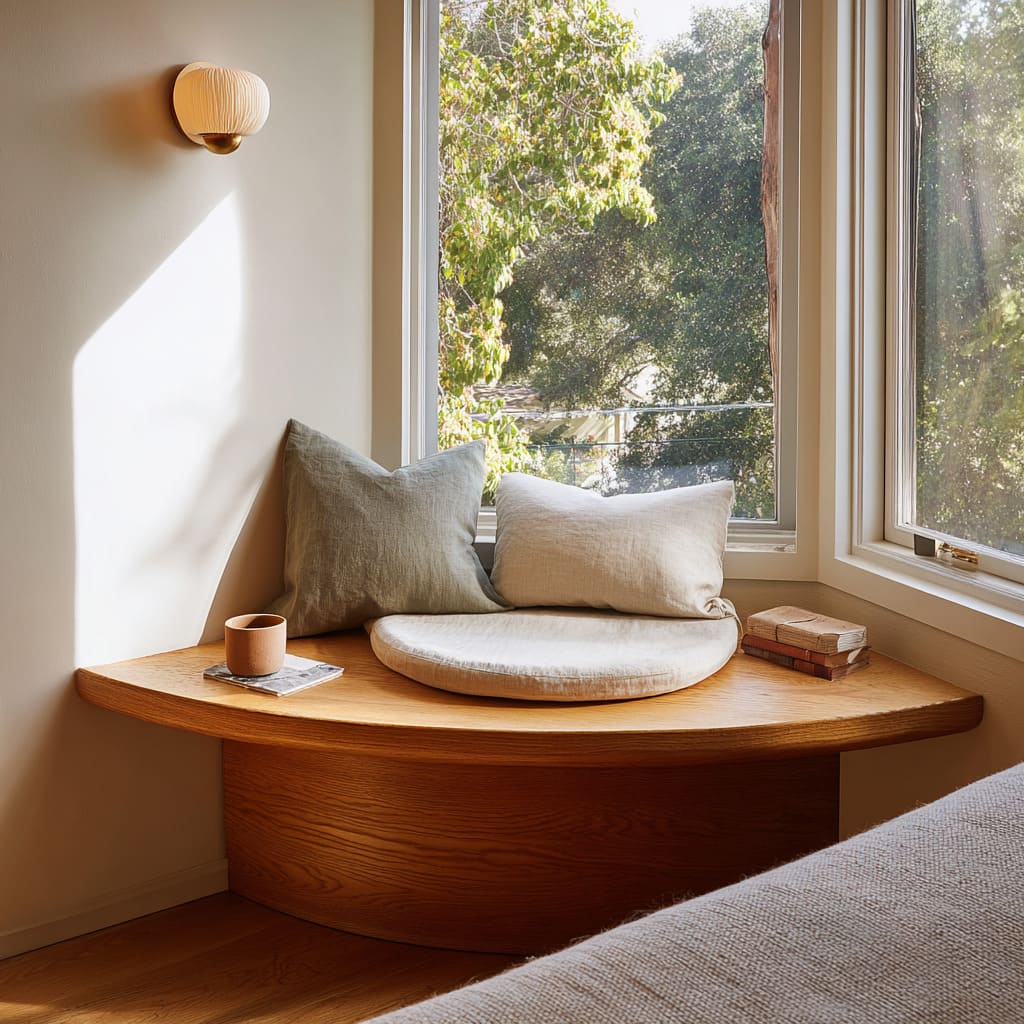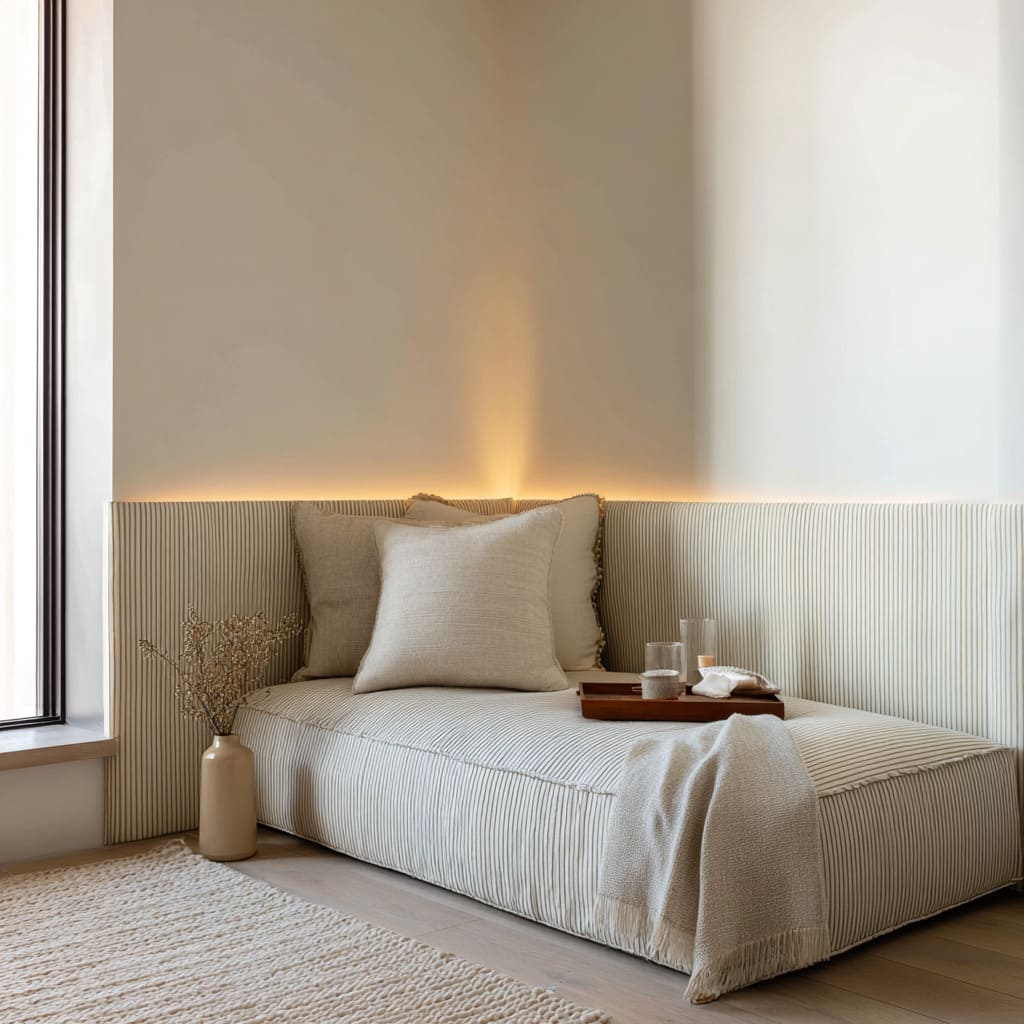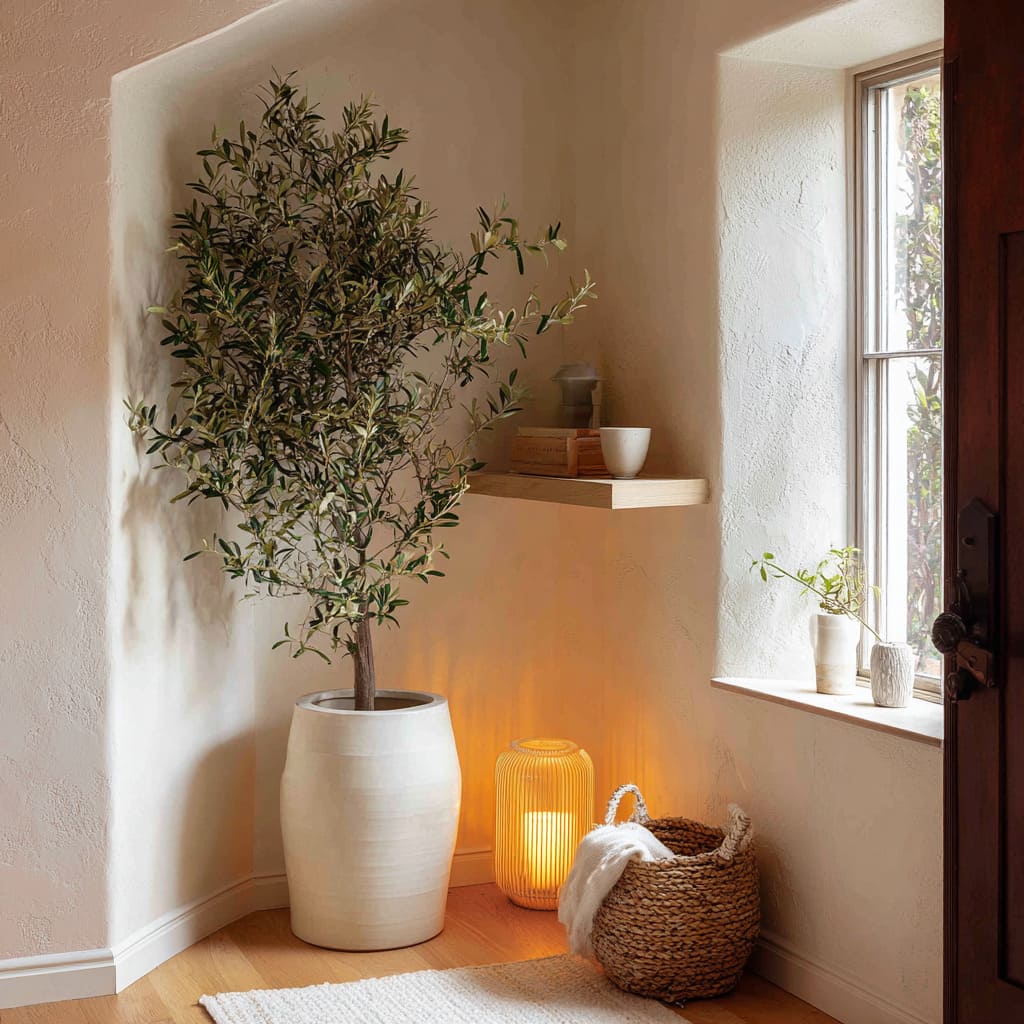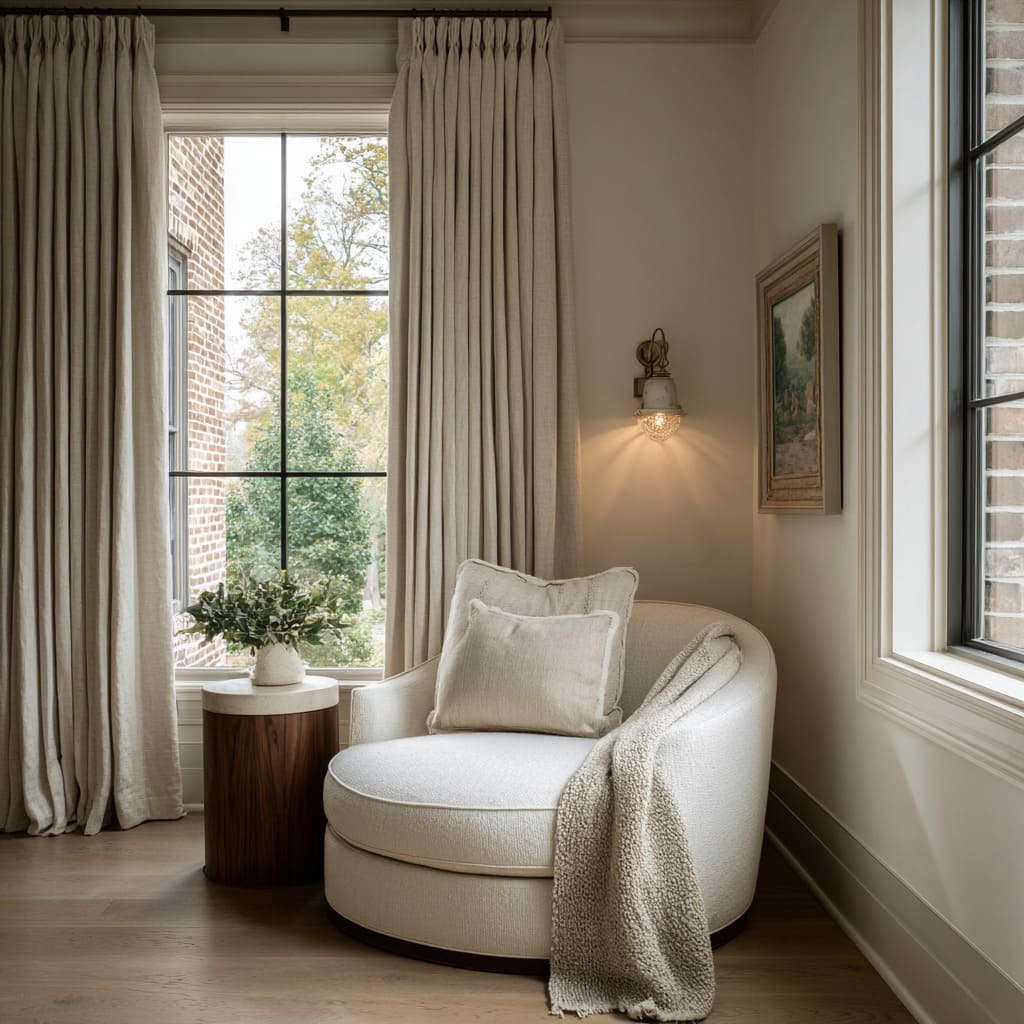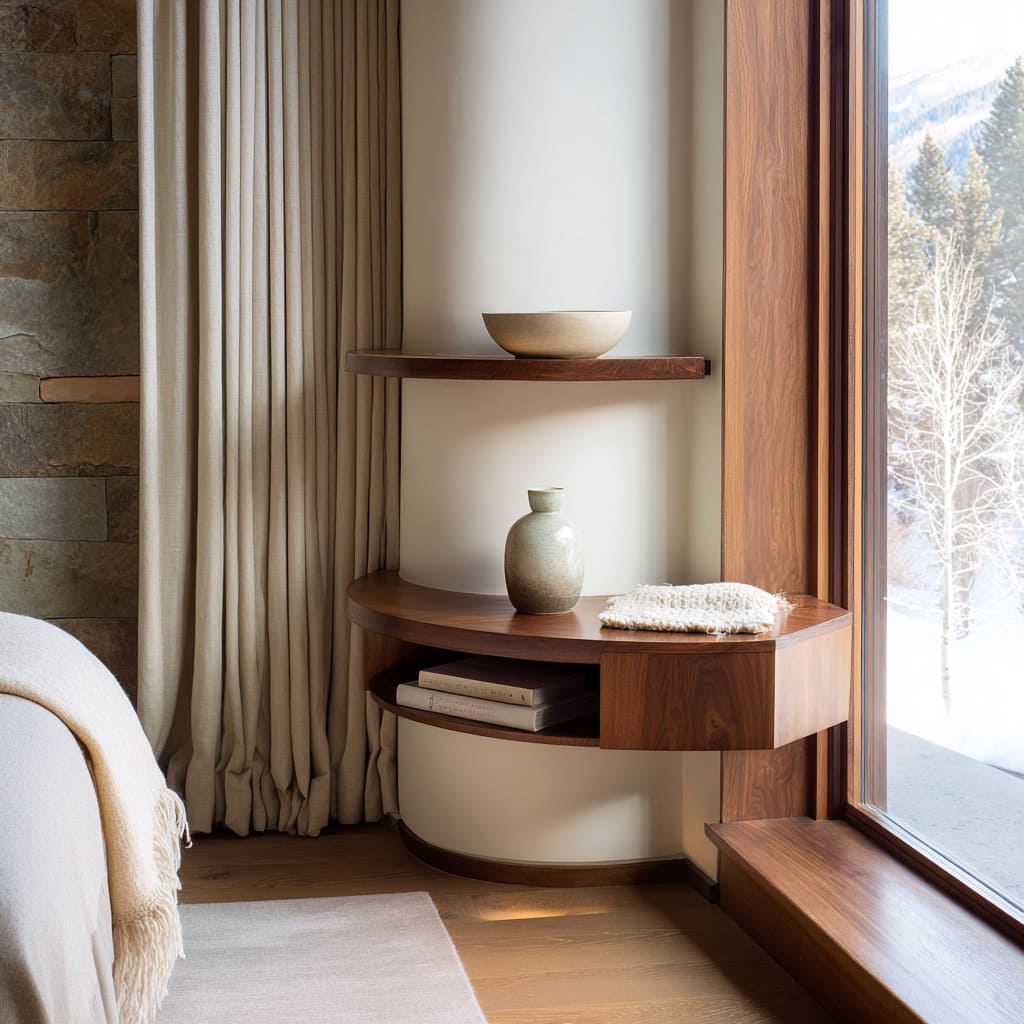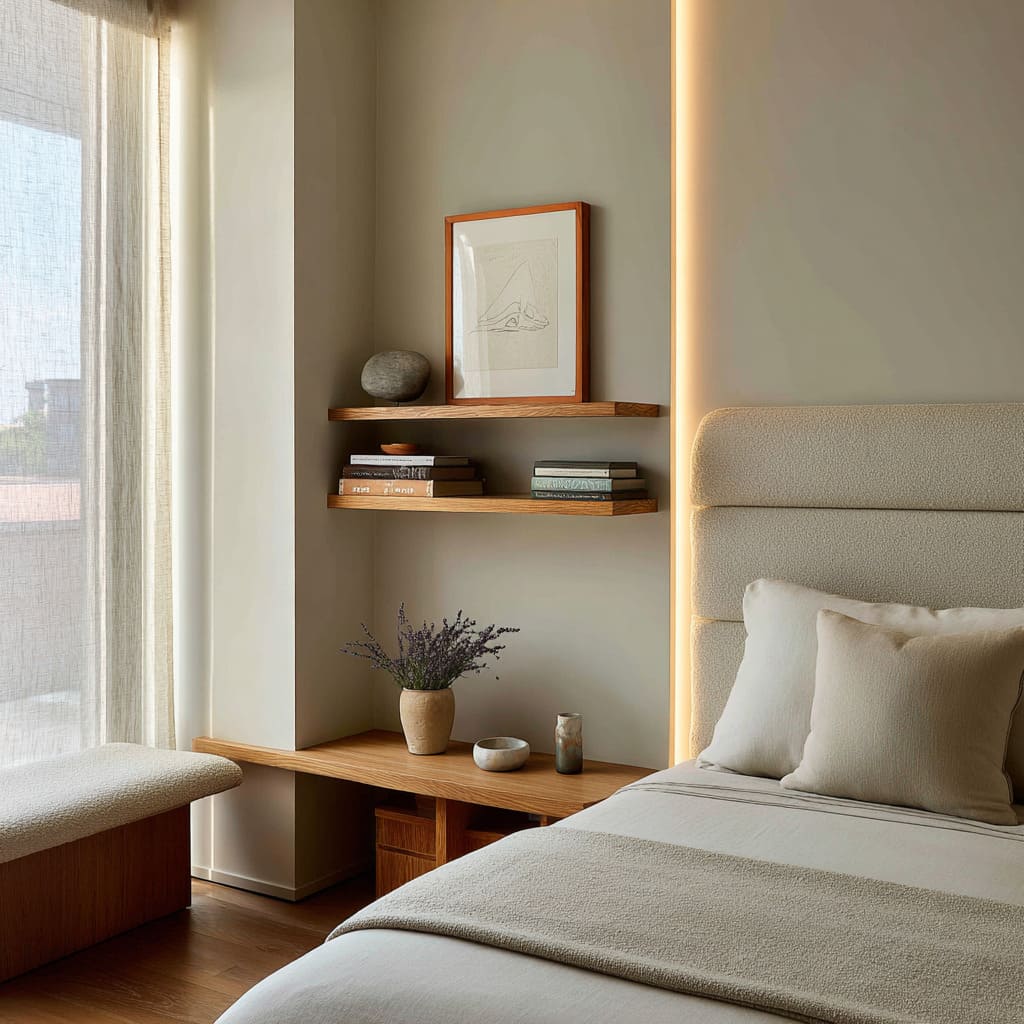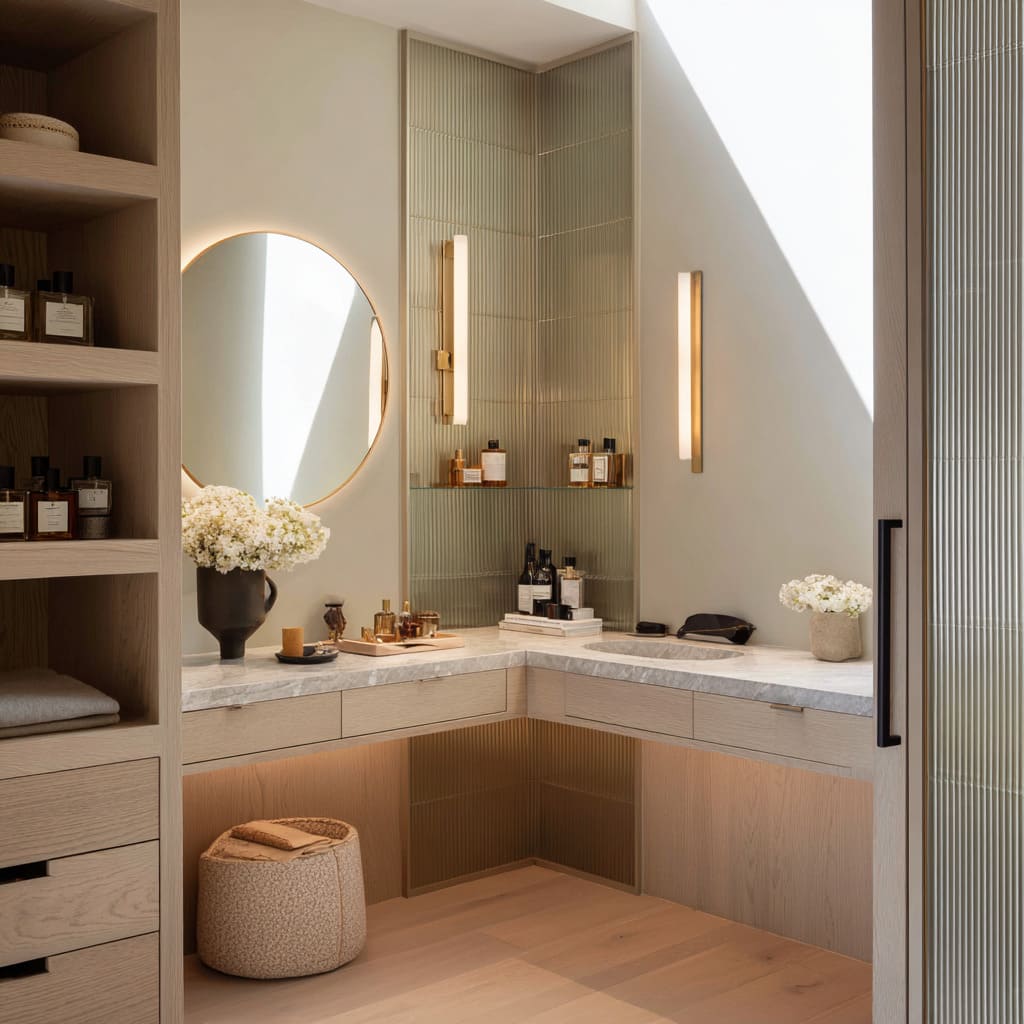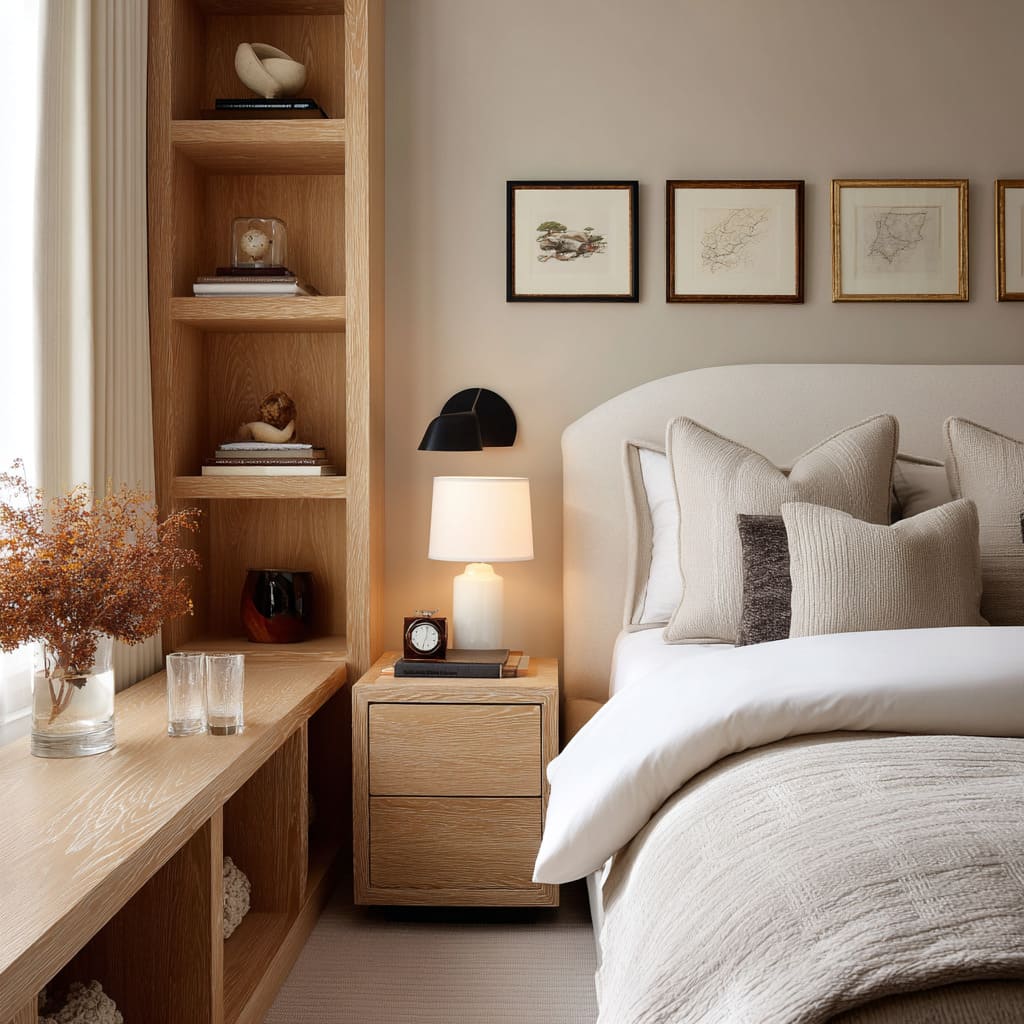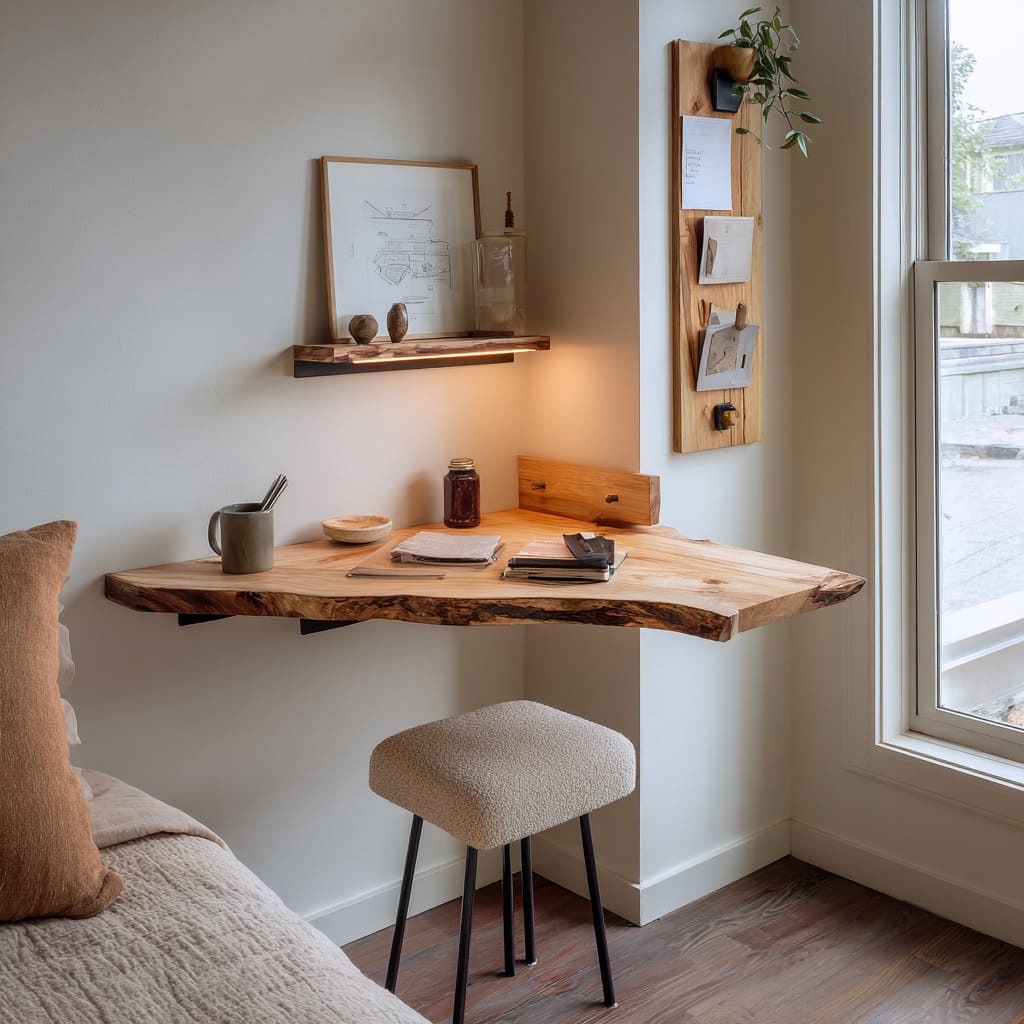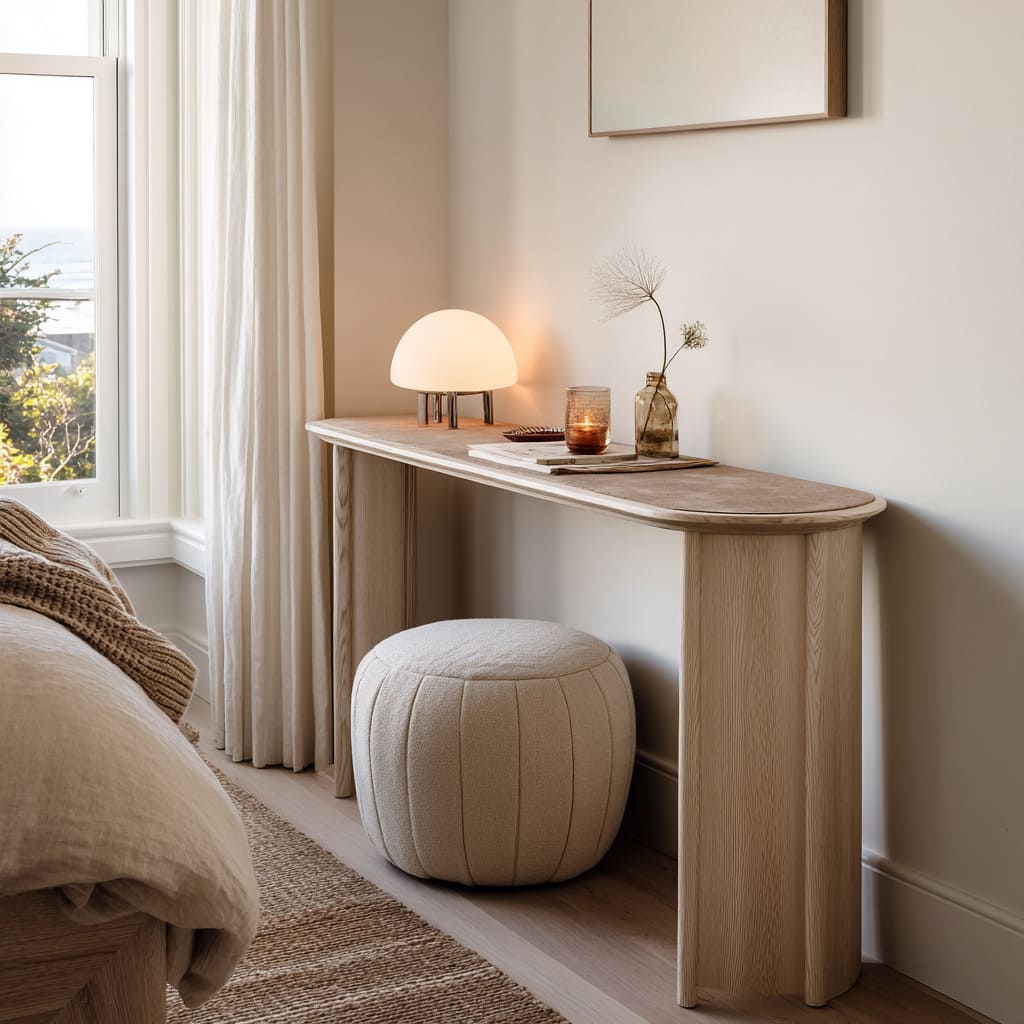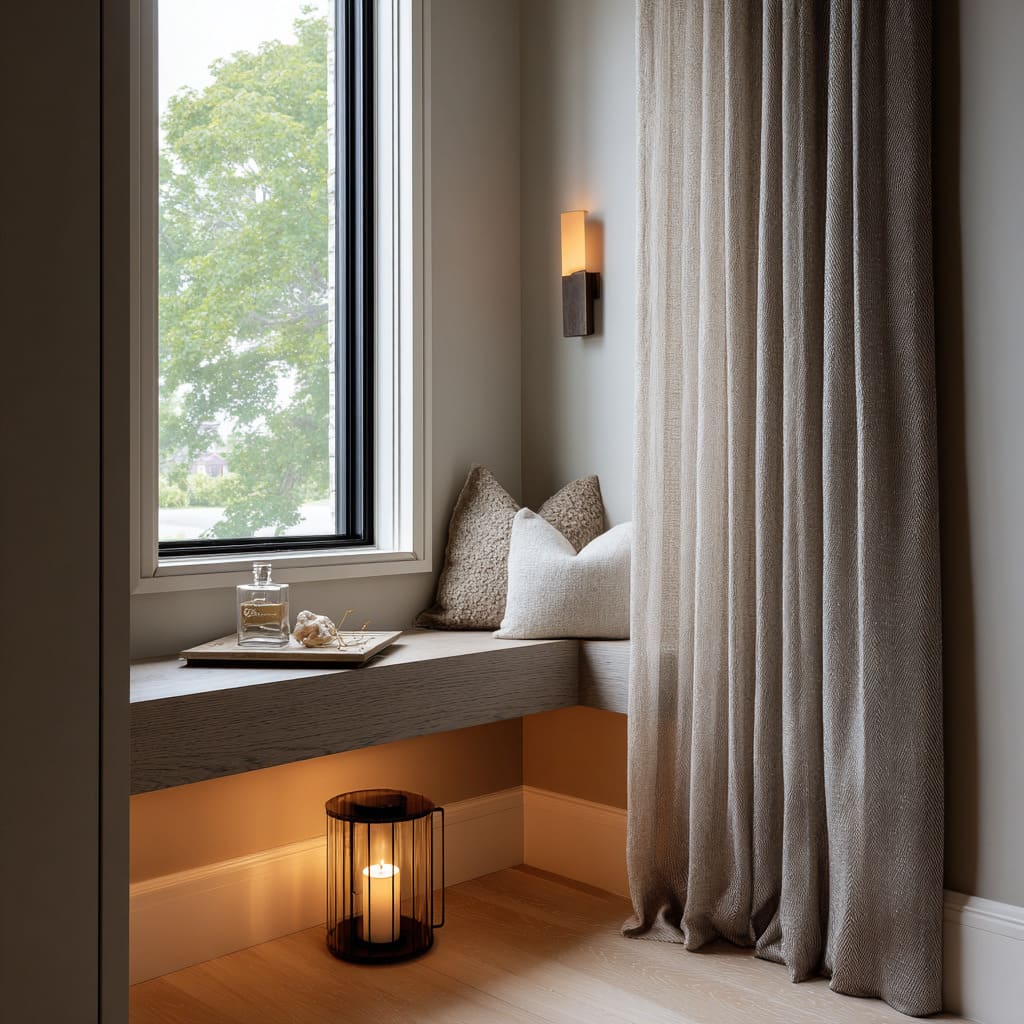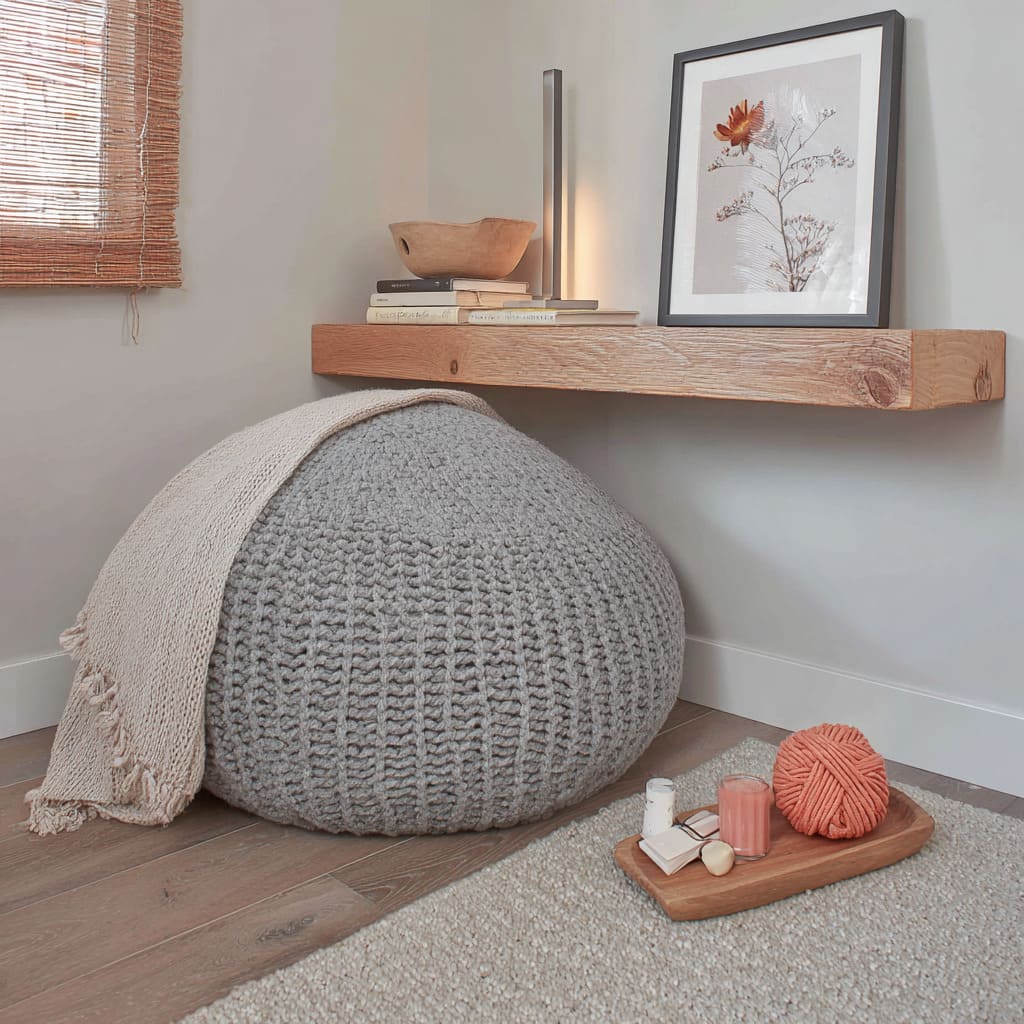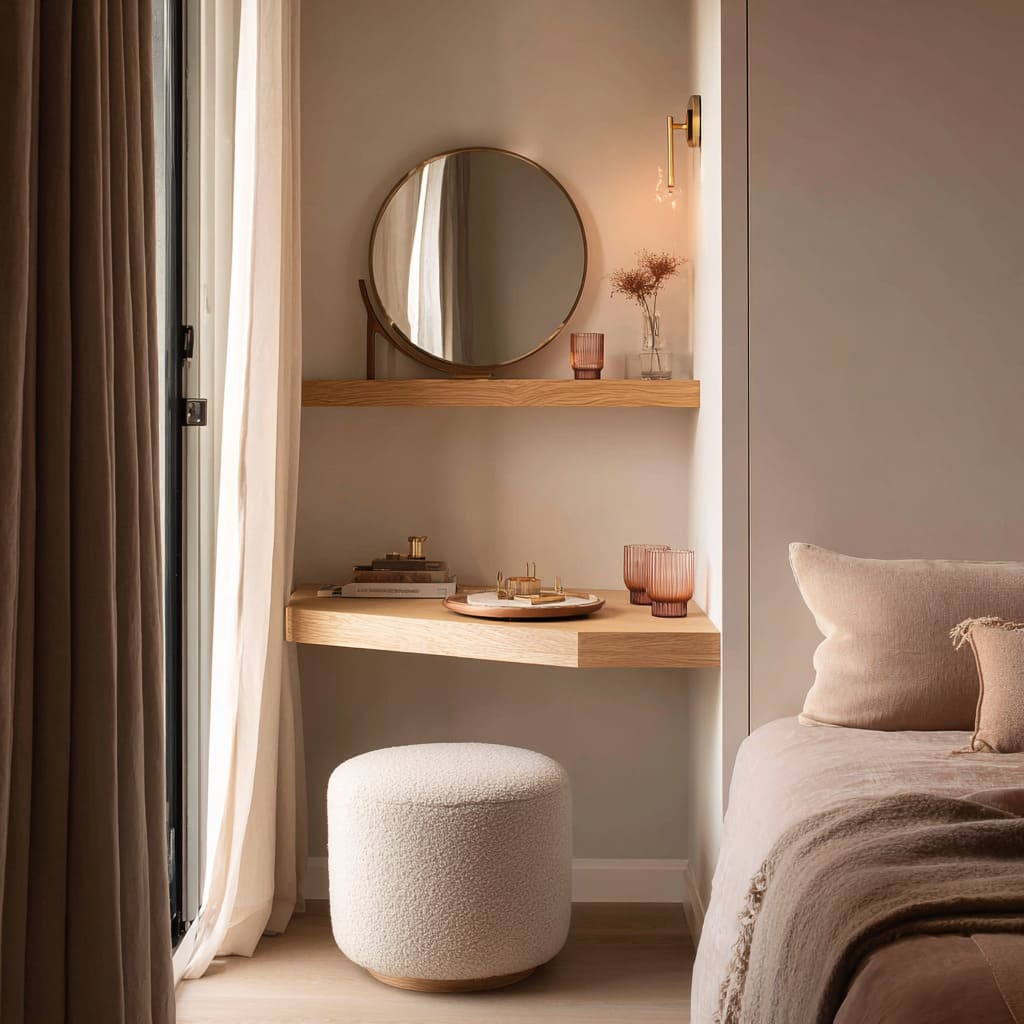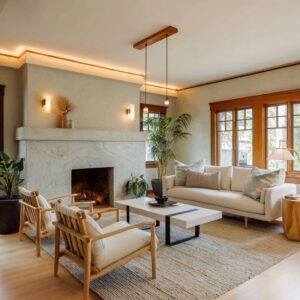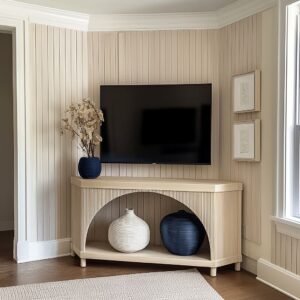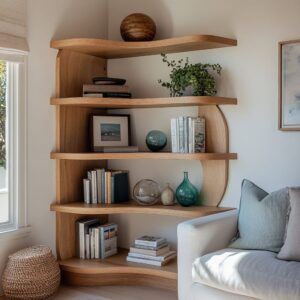In a room that already carries sleep, privacy, and personal rhythm, the side space where two walls meet can take on surprising importance. Bedroom corner ideas today lean far beyond leftover storage spots; they help shape how the room breathes, how the bed feels anchored, how light settles in the late afternoon, and how the first moments of morning unfold.
When designed with intent, a corner becomes an anchor point, a soft pause before the bed, or even a destination on its own.
Rather than an afterthought, the corner grows into a still moment inside the room: a surface for a handwritten note, a low seat where sunlight brushes your shoulder, a petite ledge for evening skincare, or a slim bench that stretches the wall line and eases the visual weight around the bed.
The feel of successful bedroom corner design ideas usually begins with one clear move: a single continuous line, a curved surface instead of a sharp one, or a gentle light source that softens the angle. Instead of blocking the eye, the corner becomes a visual hinge, helping two planes flow together.
A slim oak console stitched between a window frame and a plaster wall keeps the room easy on the eye, or a rounded vanity shelf glides along one side and bends inward, so that the hip never catches and the walkway stays open.
Light often tucks beneath floating seating or glows behind textiles, giving the corner a thin line of warmth that lifts it without adding bulk. When such gestures appear, the space stops feeling like a meeting of walls and starts reading as a quiet extension of the room’s personality.
A Corner Becomes a Purpose
One consistent trait across thoughtful bedroom corner decor ideas is clarity of purpose. Corners are not filled simply because space exists; they are shaped around behavior and mood.
A low upholstered seat tucked beneath a window offers a pause for calm reading rather than an overflow bench.
A gentle arch mirror and a soft stool placed beside drapery creates a morning skincare zone without overwhelming the layout. A narrow ledge turns a spot beside the bed into a landing space for a favorite book, jewelry, or a glass of water.
Such corners answer a human routine and grant it a home, giving the room a tiny ritual nook that feels personal rather than staged.
Corners often reveal a focus on softness: toned-down neutral palettes, warm wood grain, linen cushions, wool throws, pinstripe upholstery that hides wear yet stays delicate, and sculptural objects kept at low height. Visual noise stays minimal so energy stays grounded.
What looks like simple styling is actually subtle intention — the corner supports a slower rhythm without pushing itself forward.
The Beauty of One Line
A major theme in modern bedroom corner design is the power of one horizontal line. When a ledge, bench, or shelf continues through the corner, the angle stops feeling like a break and instead reads as one connected field.
This makes even a compact room feel stretched and calmer. A bench that picks up from the nightstand height and slides below the window turns an unused junction into a graceful connection that visually lengthens the room.
A shallow floating console keeps the floor open while offering just enough surface for a lamp and personal objects. In small bedroom corner ideas, this move is especially successful: slim forms create breathing room, yet still give space meaning.
Ways continuous lines shape a corner:.
- A thin bench that runs beneath a sill and curves inward
- A shelf that reaches across the angle and gives art or ceramics a place to rest
- A built-in box seat tucked snug under a window turn, with one long cushion anchoring the view
- A long console at mattress height acting as quiet storage and visual balance
Soft Shapes, Gentle Paths, and Corners That Never Jab
Curves appear again and again in bedroom corner design: crescent shelves, bullnose console edges, bowed vanity tops, upholstered benches with rounded backs, or live-edge wooden boards that feel hand-touched.
Instead of feeling like two walls colliding, the corner carries a sense of invitation. People walk around the bed without brushing hips, pillows nestle into the angle without stiff edges, and light skims along gentle radiuses instead of casting hard shadows.
This is where cozy corner bedroom ideas excel. The softness is not dramatic — just enough curve to feel kind.
Rounded cushions, thick knits, boucle stools, and organic vessels echo the softened geometry and make the corner relatable and restful.
Light as Quiet Architecture
In many master bedroom corner ideas, light shapes the space more than furniture does. Thin glow lines beneath benches, vertical sconces acting like light pillars, halo mirrors that wash the walls with soft radiance — these touches dissolve the usual darkness where corners meet and give the angle a lifted feeling.
Instead of a heavy shadow seam, the walls feel breezy and light-washed.
Layers of light often appear:.
- A slim pendant with clear glass casting a calm glow
- Under-bench lighting that lifts the corner off the floor
- A brass swing arm lamp that arcs gently from one wall
- Pinpoint sconces creating soft shimmer without glare
This gentle brightness builds a quiet stage for night routines, bedtime reading, or early coffee moments, turning bedroom reading nook ideas into small havens.
Texture Leads, Color Whispers
Many corner decoration ideas for bedroom settings rely less on strong color and more on material nuance. Pale oak grain, flax upholstery, cream boucle, reeded glass, ceramic vases, rattan baskets, and knitted poufs bring tactile interest without overwhelming the palette.
Texture becomes the voice, yet stays calm enough to let sunlight and shadow do half the decorative work.
This approach helps even small bedroom corner ideas feel plush without clutter. Pillows add depth but stay within the same tone family, wool throws land casually rather than formally, and pottery or branches appear in pairs or solos, never crowding the surface.
The Corner as a Soft Seating Zone
Bedroom corner chair ideas often avoid imposing tub chairs or tall backs. Instead, designers choose low lounge shapes, floor-hugging chaises, curved seats, or compact poufs that slide away when not in use.
The result is seating that supports quiet posture and keeps sightlines low, ideal for keeping the room airy.
In cozy corner bedroom ideas focused on lounging, seating leans toward:.
- Low reading loungers with soft blankets
- Window perches with layered pillows
- Thick ottomans paired with small side tables
- Upholstered niche benches for tea and a novel
Comfort stays close to the body, not spread across large silhouettes.
Moving Through Corners: Flow, Not Blockage
Corners near walk paths demand respect. A thin shelf clears knee space, a clipped vanity front avoids bumps, or a curved edge keeps the pathway smooth.
These spatial moves demonstrate how bedroom corner decor ideas can protect circulation without sacrificing style. The eye reads openness; the body feels space to move.
The room stays relaxed.
Corners That Hold Life, Not Things
One striking insight: successful bedroom corner design rarely depends on heavy storage. Instead, corners carry life — a tree that reaches into the slope near the ceiling, a slender vase with a single branch, a low bowl for personal treasures, or a tray for evening water and morning lotion.
Each piece appears chosen, not placed. Corners become breathing pockets.
When the Corner Frames Rituals
Many bedroom corner design ideas align with quiet rituals: journaling by a window, stretching at sunrise, sipping tea on a cushion bench, or setting jewelry down before bed.
Such corners do not push productivity; they hold gentle habits that make the room feel lived-in and cherished. Rather than filling space, they create a small pause in everyday life.
Bringing It All Together
Across modern bedroom corner ideas — whether a cozy book perch, a slim grooming zone, a built-in bench under soft light, or a simple chair and throw in a quiet nook — the key intention remains the same: turn the angle into a soft moment that supports human rhythm.
Corners are not where objects end; they are where calm begins. By blending smooth lines, restful light, human-scaled seating, and thoughtful placement, corners stop being forgotten edges and become soulful parts of the room’s story.

